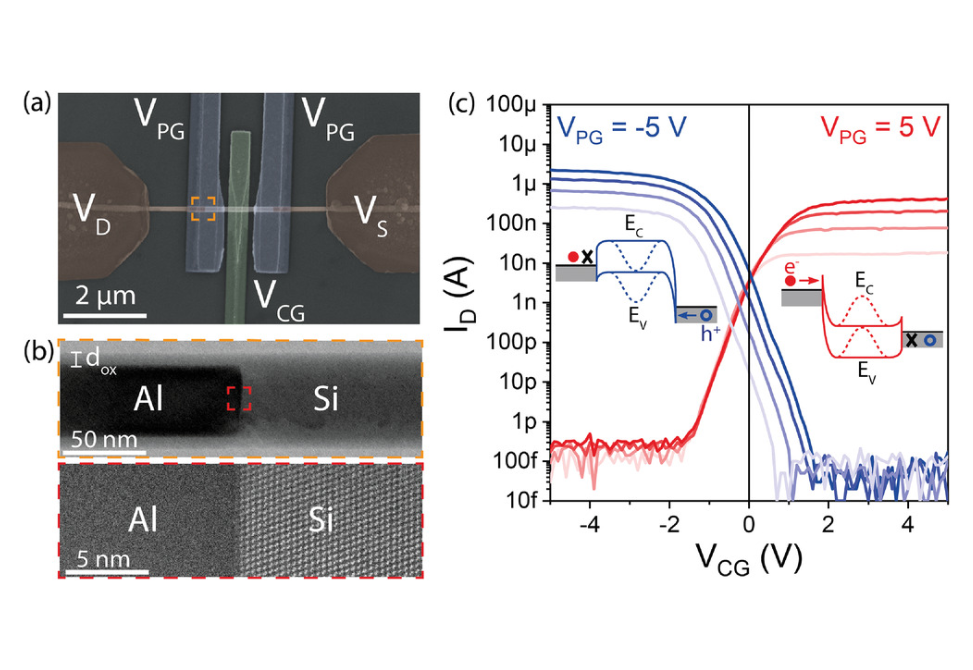Reconfigurable Complementary and Combinational Logic Based on Monolithic and Single-Crystalline Al-Si Heterostructures
Abstract
Metal-semiconductor heterostructures providing geometrically reproducible and abrupt Schottky nanojunctions are highly anticipated for the realization of emerging electronic technologies. This specifically holds for reconfigurable field-effect transistors, capable of dynamically altering the operation mode between n- or p-type even during run-time. Targeting the enhancement of fabrication reproducibility and electrical balancing between operation modes, here a nanoscale Al-Si-Al nanowire heterostructure with single elementary, monocrystalline Al leads and sharp Schottky junctions is implemented. Utilizing a three top-gate architecture, reconfiguration on transistor level is enabled. Having devised symmetric on-currents as well as threshold voltages for n- and p-type operation as a necessary requirement to exploit complementary reconfigurable circuits, selected implementations of logic gates such as inverters and combinational wired-AND gates are reported. In this respect, exploiting the advantages of the proposed multi-gate transistor architecture and offering additional logical inputs, the device functionality can be expanded by transforming a single transistor into a logic gate. Importantly, the demonstrated Al-Si material system and thereof shown logic gates show high compatibility with state-of-the-art complementary metal-oxide semiconductor technology. Additionally, exploiting reconfiguration at the device level, this platform may pave the way for future adaptive computing systems with low-power consumption and reduced footprint, enabling novel circuit paradigms.
Citation
Böckle, R., Sistani, M., Bažíková, M., Wind, L., Sadre‐Momtaz, Z., den Hertog, M. I., Murphey, C. G., Cahoon, J. F., & Weber, W. M. (2022). Reconfigurable complementary and combinational logic based on monolithic and single‐crystalline al‐si heterostructures. Advanced Electronic Materials, 9(1), 2200567. https://doi.org/10.1002/aelm.202200567


